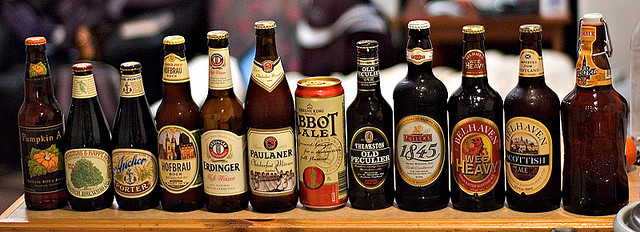 If a company offered you free beer, would you become a regular customer? Would you go out of your way to buy their brand before another? Chances are your answer is yes. Sound too good to be true? It’s not. However, there is a catch; you’ll have to do something for the free beer. You’ll have to get involved. How far are you willing to go?
If a company offered you free beer, would you become a regular customer? Would you go out of your way to buy their brand before another? Chances are your answer is yes. Sound too good to be true? It’s not. However, there is a catch; you’ll have to do something for the free beer. You’ll have to get involved. How far are you willing to go?
This question is what Holland beer company Amstel International set out to answer in a new marketing campaign that brings customers to the center and makes them part of the action.
The Method
As brought to light by AdWeek, Amstel tried something that had not been done before. They went beyond the normal limits of creativity into the realm of innovation by creating a vending machine that dispensed free beer to any passerby that so desired.
For the ad spot, if someone wanted a free beer – at the machine cleverly located on a busy, downtown street, complete with a cowbell to draw attention – a person simply needed to stand still in front of the machine for three minutes. By completing the task, a beer was dispensed at no charge. Attention-worthy? Absolutely.
The Madness
While this beer machine was created for an advertising spot, it involved real people – not actors – and drew more attention than any other vending machines in recent history. The ad drew attention to the product and went viral overnight. Below are a few reasons why.
The Right Market
The Amstel ad catered to a specific audience: business professionals who enjoy beer. This is critical for any successful marketing campaign. While an idea may sound like a solid, fail-safe method if it’s not targeting the right demographic, it will fail. This should be the first consideration in any creative ad campaign.
Take-Home Lesson
Not only did the ad highlight a product, it provided a lesson to those involved in the experiment and to those watching at home. Stillness matters. With the rapid-fire technology and smart-phone society that we all belong to, it’s rare to take time to be still. This lesson highlights this thought and presents it as a value, something to strive for. By creating a take-home lesson inside of an ad spot, you’ve created something for customers to ponder, even after you ad has finished airing. This makes it memorable.
Out of the Ordinary
Where this ad spot does not vary from the other creative campaigns that have come out throughout the history of advertising – but is an important factor nonetheless – is that it’s unusual. The concept is new, fun and almost outrageous. For an ad to make an impact it must be different and must be able to stand on its own.
The Application
What does this mean for your next campaign? Consider the factors above and then think of your own product or service.
What are you trying to accomplish?
Just as important as understanding your market is knowing your purpose. Are you trying to raise awareness on an issue or cause? Are you trying to increase sales? Are you introducing a new product? Start your campaign by answering these questions.
Know Your Market.
Think about who you’re trying to reach. If you sell modern furniture products while offering home staging services, a cartoon campaign that is fun and unique but targets 12-year-old girls probably isn’t the right route. No amount of creativity will save a campaign that targets the wrong group of people.
Test Your Idea.
Before putting the money into developing your ad, test your concept. Reach out to a test group from your potential market – it can be comprised of people you know, it doesn’t have to cost anything – and pitch your idea. Ask for feedback, ask their thoughts and feelings about what you’ve shared. If it’s a hit, you might be onto something.
By putting in the proper time up front, you can increase the possibility that – just like the Amstel ad spot – your next creative campaign has the potential to go viral and make an impact.
